
Curator’s statement
Famous for its colorful hillside neighborhoods, winding stairway and abundance of street art, the port city of Valparaíso, Chile, a UNESCO World Heritage Site, is not to be missed on your visit to Chile. Valparaíso is a throwback to a time when electric trollies coasted along the waterfront and funicular elevators carried people high into the hills where panoramic vistas of the bay await.
The Fora Difference
Book with Molly to access exclusive perks and experiences on your trip.
Killer perks
Free upgrades, spa credits and more—we got you
Personalized recs
Customized travel planning for your style
Insider knowledge
Expert advice from people who’ve actually been there
Where to stay
Unlock perks by contacting Molly to book your trip.
Day 1: Valparaíso, Chile's Street Art Tour, Markets & Ports
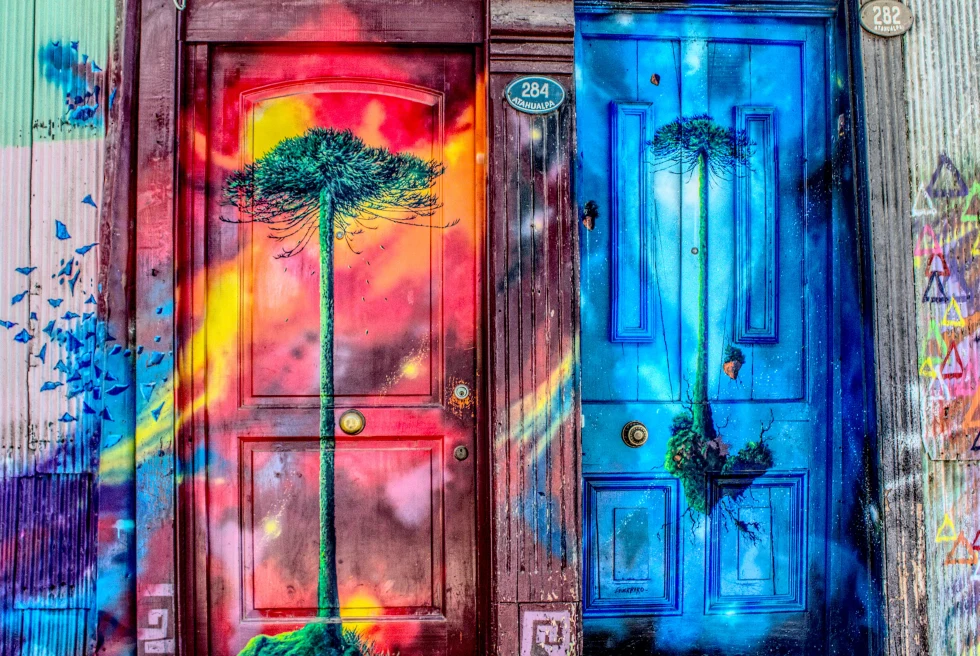
Breakfast: Cafe Entre Cerros (cafe between hills) is a cozy spot to stop for a quick coffee and breakfast. They’ve got a great little menu of specialty coffees and teas, freshly squeezed fruit juice and small bites like avocado toast, pastries, cakes, fruit salad, simple sandwich and salads.
Street Art Experience in Valparaíso, Chile
Valpo Street Art is recommended everywhere as the FIRST & the BEST in street art tours in Valparaiso. They offer three tours, and the one I think you will like best is "The Classic". On this walk, you will get to see the street art and graffiti art of Valparaiso with a local Graffiti artist. You'll walk through this maze of a city, and as you walk through the alleyways and staircases, you'll learn about this “Favela-Reminiscent” City. The tour stands out due to the fact that you can learn everything you ever wanted to about graffiti. They explain the techniques used, a background on the artists, history of graffiti in Chile, the types of artists, the styles, and of course, the impact this has on the city.
Your expert guide will make sure you have an amazing experience, going underground into the world of street art, and seeing an area less visited by most people who come to Valparaíso. On the walk, you will see everything from simple tags to elaborate art pieces. You will talk about the social aspects, the techniques and codes behind this lively art scene.
The walk lasts about two hours, as you walk through Valparaiso's main square, Sotomayor and Cerros Alegre and Concepcion, which are the covid-friendly routes we have available for the moment. So you know, Valparaiso is a city made up of 45 hills. To make getting around Valparaiso easier, the city has installed funiculars (huge, fancy elevators). The best known is the Ascensor Concepción funicular which dates to 1883, and takes you to "Cerro Alegre" the epicenter of street art and activity for visitors to Valparaíso. This is where the tour takes place!
Lunch: This neighborhood is a great place to spend an afternoon wandering the streets, checking out the art-smothered alleyways and building sides. Because the tour will have taken you through most of the neighborhood, I advocate having lunch here and then heading elsewhere for the afternoon!
For lunch, head to the yellow house, AKA Hotel Brighton, for a spectacular view over the Pacific Ocean. Pop in and enjoy lunch on their beautiful veranda. Outside the hotel you can browse paintings by talented local artists as this is one of the best areas for shopping in Valparaíso for locally made handicrafts. If the spirit so moves you, check Sala de Arte Wenteche, which is right around the corner. Note: they're only open when they have exhibits, but the whole area is full of galleries and artesian stores.
Markets & Ports in Valparaíso
This afternoon, discover the local spirit of Valparaíso by visiting its more authentic settings, the seafront, which is flanked by huge ports and unruly markets.
The stretch of the port (Caleta Portales) stretches roughly from Meule Baron to Muele Prat.
Start by taking the train down, and then along the coastline to reach Mercado Cardonal, which boasts seafood products from all over Chile. I know you all don't eat seafood, but fishing is a major industry in Chile, and integral in both its history and current economy.
Most fishing in Chile today is still artisanal, rather than "big box" like in the US. You will be amazed (horrified?) by the sea lions, seagulls and pelicans that crowd the market to get scraps. This is definitely the most chaotic sector of the city, where you can soak up the local spirit through the colors, aromas and sounds of the place. Insert yourselves into the depths of the market and experience the traditional kitchens with the smell of the port and the taste of the sea.
Right outside of the market is Sombrerería Woronoff. Might not be your thing, but this is a hat shop that's been serving people since the 1920's and it's a fantastic, old fashioned hole-in-the-wall with great finds! After you've gotten your fill, you can either walk (35 minutes, and be sure to walk on Brasil, as it's flanked by parks!) or cross the city in a traditional electric trolleybus to reach the Mercado Puerto.
Mercado Puerto was built between 1922 and 1924 by the Bezanilla y Vergara office in a historicist style. It occupies a block building made up of Blanco, Valdivia, Cochrane and San Martín streets, and is the epicenter of Barrio Puerto. It was closed for about ten years due to serious damage caused by the earthquake of 2010 and was officially reopened in 2020. It currently has 51 stalls, of which 18 are for fruits, vegetables, nuts, emporiums, dairies, plants, olives and jams and 33 are stalls of local crafts from different areas such as goldsmithing, prints, photographs, altarpieces and products made of leather.
Finally, head over to Plaza Sotomayor for a quick look. Bordering the famous port in the center of Valparaiso, this popular plaza is the main plaza in Valparaiso and it contains the country's naval headquarters. Plaza Sotomayor is dominated by the palatial blue-colored Edificio Armada de Chile, and in the middle of the square lies the Monumento a los Heroes de Iquique, a subterranean mausoleum paying tribute to Chile's naval martyrs. The Aduana Nacional (Customs House) and Estacion Puerto, the terminal for commuter trains, are also nearby. Muelle Prat, the pier at the foot of Plaza Sotomayor, is a lively place on weekends, and also the prime point for crane-and container-spotting.
Dinner and Drinks in Valparaíso
Drinks: Fauna blessed with a rooftop terrace on a hillside giving patrons a stunning uninterrupted panorama of the surrounding city. To drink, be sure to try the Fauna Pisco Sour (with berries!) or a Mauco IPA from just up the road in Concón.
Dinner: Stunning sea views await at the loftily perched La Concepción, housed in an 1880-constructed mansion complete with garden terrace. Gourmet Chilean and international dishes form the à la carte menu, with special focus on fish and seafood: think sesame-crusted tuna, fish stew, clam salad and steak. Weather permitting, book a terrace table for an exceptional panorama of the port city of Valparaíso. The wine list reflects Chilean vintages.
Day 2: Chilean Wine Tasting
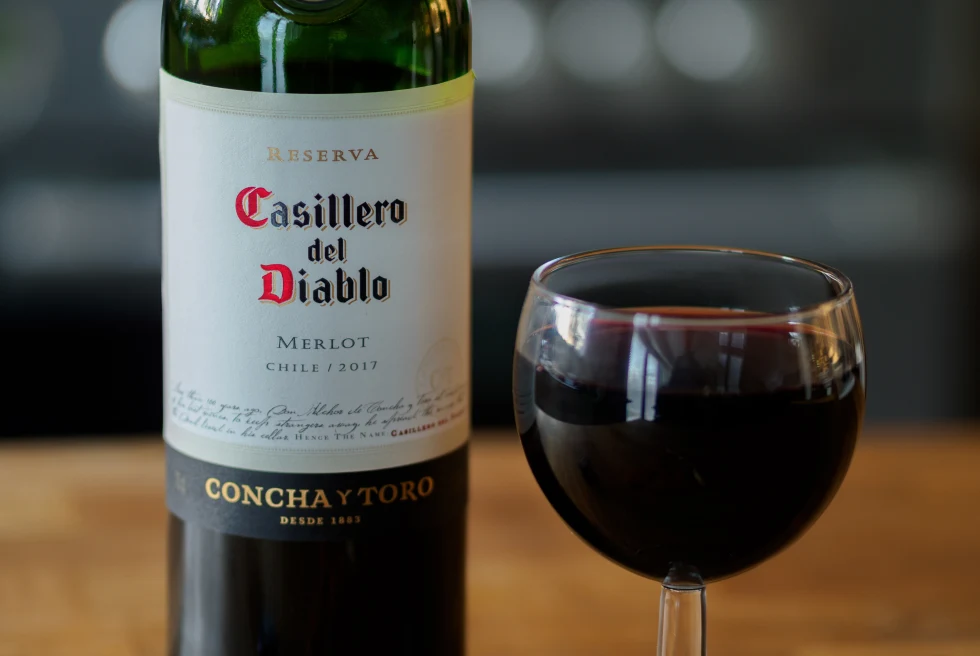
Wine Tasting in Chile
Today, pleasure your palate with the robust flavors of Chilean wines on a full-day wine tasting tour of the Casablanca Valley. Famed for its agricultural perfection, the splendid scenery and smooth wines, the Casablanca Valley is sure to impress during visits to local, organic vineyards.
At your first of four stops, you will meet a Chilean farmer and enjoy a tasting of his properties (organic) wines. Hear about the production and planting of trees and fruits that take place on this farm. From here, you'll get to visit two more of these famous vineyards and get a glimpse into (and taste of!) the production of these very high quality and famous wines. Added to your outing is a stop for lunch, where you will have a couple of delicious restaurants to choose from. The restaurants chosen by your local guide are well-known for their high quality and traditional food.
Dinner at Cafe Turri
When asked by a foreigner where to eat, a local will almost certainly reply ‘Cafe Turri‘. Housed in a 19th-century building, the cafe not only has one of the best views in town but also has an incredible menu with a wide selection of both Chilean and foreign dishes. Scallops and shrimps in whisky and cumin, octopus carpaccio and lamb ribs in pepper sauce or honey and mint are just some of the sophisticated creations on offer. Great for dinner, Turri also has a cafe if you’re in the mood for a lazy afternoon with tea and cake. Be prepared to spend for the privilege of enjoying one of Valpo’s oldest venues.
Day 3: La Sebastiana
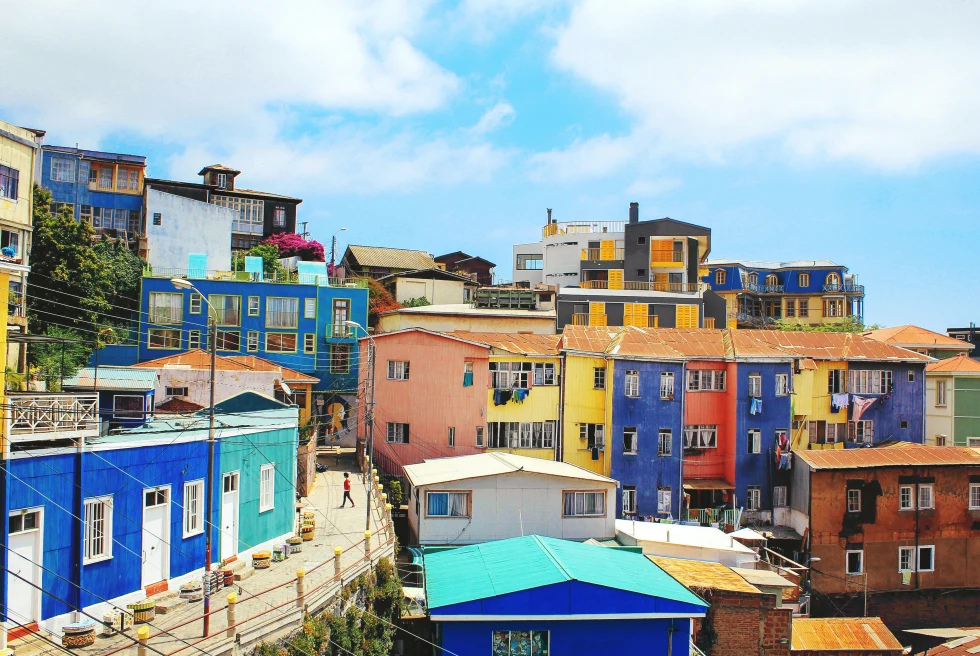
Breakfast at Cafe del Poeta
Before visiting La Sebestiana, it's only fitting that you have breakfast at Cafe del Poeta this morning, a restaurant that provides the opportunity to be seated in close proximity with Nobel prize-winning poets. They may be in the form of mini models, but it’s charming nonetheless. Here you can read Neruda and Mistral away from the bustle of the city while eating tiramisu or sipping on freshly squeezed orange juice. The atmosphere is 1920s, the coffee is strong, the food is unpretentious while being delicious. Although Café del Poeta is a cheaper alternative to higher end restaurants, it still manages an extensive menu.
Visit La Sebastiana
Pablo Neruda was a poet, an eccentric, a bohemian (before it was en vogue...) and a collector, who in addition to leaving inspiring verses, left three houses that became extensions of his personality, one of which is La Sebastiana.
La Sebastiana exudes a part of the poet in each of its corners. To enter the house, you have to access from a second floor, which reaches a bright living room and dining room, separated by a circular fireplace. The view of the hills and the bay of Valparaíso from this space is simply perfect. On the next floor is the master bedroom and at the last, the poet's library. The house is full of nooks and crannies, memories of his travels and extravagant spaces.
This is how Neftalí Reyes Basualto (Pablo) embarked on the search for a house in his beloved Valparaíso, a perfect glimpse into his mind and the oddness of Valpo: "I want to find in Valparaíso a little house to live and write quietly. It has to have some conditions. It can not be very tall or short. It must be solitary, but not in excess. Neighbors, hopefully invisible. They should not be seen or heard. Original, but not uncomfortable. Very light, but strong. Neither very big nor very small. Far from everything but close to mobilization. Independent, but with commerce nearby. It also has to be very cheap." Finally his friend Sara Vial, to whom he wrote these words, found exactly what the poet was looking for.
Lunch at Casa Dumplings: For a break from Chilean food, head to Casa Dumplings for lunch! Cute and quaint, Casa Dumplings serves....dumplings. On your walk from the museum to Casa Dumplings you'll pass a number of restaurants, including Samsara which is also highly reviewed and serves south east Asian if you prefer that.
Explore Bellavista: Having just visited La Sebastiana, you'll be in the Bellavista neighborhood, one of the nicer neighborhoods in Valaparaíso, Chile. The charm of these neighborhoods is found in simply meandering through the streets, which I recommend spending a few hours doing. Below are a few recommendations to guide you!
Mosaic Staircase: Being built on so many hills, Valparaiso is like San Francisco with staircases everywhere you turn. However, Valparaiso steps are painted, tiled or otherwise decorated. At the entrance to Bellavista, alongside the funicular, is an exquisite staircase that is totally tiled.
Museo a Cielo Abierto: In sticking with a theme, you'll have now noticed that in Valparaiso, colors are everywhere, art is in the air and you can breathe it in every step. While in Bellavista, check out the Open Sky Museum (Meseo a Cielo Abierto). This museum is a pioneer initiative in Chile and is composed of 20 murals of diverse pictorial styles located on the slopes of Bellavista Hill. It was inaugurated in 1992 and there are well known artists, some of them world famous like Roberto Matta andMario Carreño.
Finally, dive into the city’s history at the Parque Cultural de Valparaíso. This cultural hub is very important to the people of Valparaíso and their daily lives. Originally a Spanish fort, which then became a prison — and was used to house and torture political prisoners during the Pinochet dictatorship — it’s now a community space for art and culture. Here you can see art of former prisoners on the walls, young people practicing dance routines and (if you get lucky) an exhibition.
Chilean Food & Wine Experience For Dinner
This tasting experience was created to showcase Valparaíso, Chile through its local food and wines. You'll try products from bakeries, delicatessens, farmer's markets and pastry shops and pair them at a private cellar called "Caoba Tasting Room", where you'll open 4 premium wines. You'll talk a bit about history, identity and local traditions, which have shaped the way "porteños" live, and how foreign influence has been present at Chile's tables since the early 19th century. For the food, the experience consists of snack-size food, which in Chile is called "picoteo", rather than elaborate dishes, with the intention of having more variety.
For wine, you'll taste varieties such as Sauvignon Blanc, Riesling, Chardonnay or Viognier, as well as Pinot Noir, Merlot, Carmenere, Cabernet Sauvignon, Carignan and Syrah. The host works with full varietals (not many blends, unless the food could use that touch) and the wines are in the Reserva, Gran Reserva and Premium range. The wines vary in region, but they are all Chilean wines.
Day 4: Viña del Mar
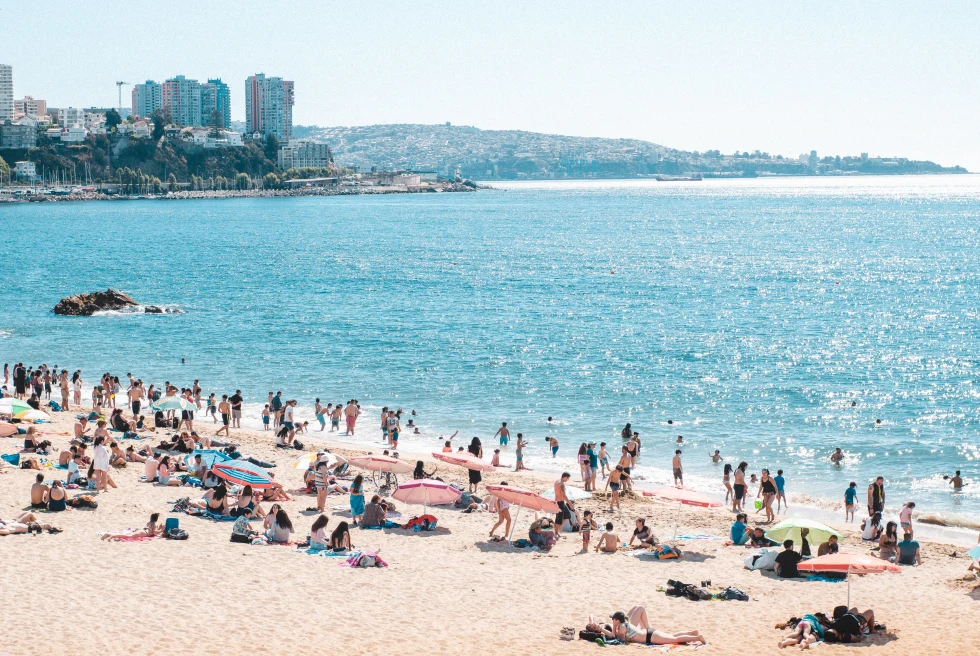
Day Trip to Viña del Mar
A 15-minute bus or train ride is all it takes to exchange the colorful cerros and chaotic alleys of Valparaíso for the tree-lined avenues and ostentatious high-rises of Viña del Mar, Chile’s largest and best-known beach town, drawing thousands of mostly Chilean vacationers each summer. In some ways, it’s indistinguishable from beach towns elsewhere in the world, with oceanfront bars, restaurants and families abound. But lurking in the older corners of town are extravagant palaces, elegant villas and sumptuous gardens. Many date from the late nineteenth century when Viña del Mar — then a large hacienda — was subdivided into plots that were sold or rented to the wealthy families of Valparaiso who came to spend their summers by the sea. The city also has a pair of beautiful botanical gardens and a museum with an important collection of Easter Island art.
Beach Bum: It’s the beaches that draw people to Viña del Mar. Although the water may be cold, these playas are undeniably picturesque. There are plenty of great spots to choose from directly accessible all around the city, but my pick is Playa Reñaca. The golden sands, beautiful blue ocean, and city backdrop really give this beach some character. Second pick is Las Salinas, which is perfect. The white sand stretches as far as the eye can see, perfectly juxtaposed with the rugged, rocky sea line.
Gardens: Viña del Mar has been given the moniker the “Garden City” for a reason. Although its lush city plazas are more picturesque than most, it’s the incredible Parque Quinta Vergara that’s the real star of the show. This neo-Gothic palace surrounded by immaculately landscaped gardens is the epitome of old world opulence. Beautifully landscaped areas complement modern structures turning the park into more than just an area for relaxation. The park is an aesthetic wonder.
FYI, if you're there in February, you'll be there for la Festival Internacional de la Cancion de Vina del Mar. This international song festival is massive in Latin America, attracting legions of the hottest singer-songwriters from all over the continent. Held in a specially built amphitheater in Quinta Vergara during February each year, the event is televised to millions of adoring fans. If you're interested, it might be worth checking out.
The Garden Clock: Quirky or cheesy? You decide. Either way, there’s no denying the colorful Reloj de Flores is one of Viña’s most photographed attractions. Since 1962 its Swiss-made hands have been chiming on the hour, every hour as they pass over a colorful bed of flowers.
Museums: Whether it be the Museo de Bellas Artes for some sophisticated high-end culture or the Palacio Rioja Museum for a taste of Viña’s bourgeois past, the city has a plethora of fascinating museums to keep even the keenest culture vulture amused.
Palacio Rioja Museum: This beautiful building is a must see for anyone with a passion for architecture and design. Inside the building you will find a museum dedicated to aristocratic furniture; the variety of furniture in the elaborate and regal interior must be seen to be believed.
The Francisco Fonck is a must for anyone who can’t make it to Easter Island thanks to its real life Moai statue on display.
Architecture: Despite being a modern upscale city, Viña del Mar is home to some amazing architectural landmarks that evoke vivid images of lavish lives of yesteryear.
Wulff Castle: If you are looking for history in Viña del Mar, Wulff Castle is an excellent choice. Built for the Wolff family in the early 1900s, the castle is now the home of the city heritage center where you will find a wealth of information about the site and surroundings. The castle sits on the edge of a cliff and with blue waves lashing underneath it is an ideal photo opportunity. This is also an excellent choice for anyone interested in architecture.
Iglesia de Los Padres Carmelitas: If you want to see beautiful architecture in any city, one of the best places to visit is the church, and this stunning one in Viña del Mar will not disappoint. The beautiful white building is imposing yet graceful and has to be seen to be truly appreciated. Aside from this, this place of worship is very active and so makes the ideal place for anyone looking to connect with their spirituality while in the city.
Vegara Pier: In 2016, after many years of being closed, this pier was reopened to the public. The pier has an incredibly industrial feel and is a point of interest for anyone looking to discover more about the history of the area. The pier is particularly beautiful at sunset when the sun glistens off the ocean and casts stunning shadows over the pier. This is the ideal place to have a picnic and take in the scenery.
Dinner: I have a friend who lived in Valpo for 18 months and this is what she sent me when I asked her where to eat...
"Go to El Peral. El Peral is one of my favorite Valparaiso restaurants, and really restaurants in all of Chile. Every single time I visit Valpo, I make sure to make a stop here! It’s tucked away on a quiet cobblestone side street, and their ever-changing menu features traditional Chilean dishes with a modern flare. Be sure to try the ceviche of the day or the “pastel de jaiba” (crab pastry) — two of my favorites! If you drink, their ají sour is a winner."
The restaurant itself looks quite charming: colorful, lots of plants, outside spaces, etc.
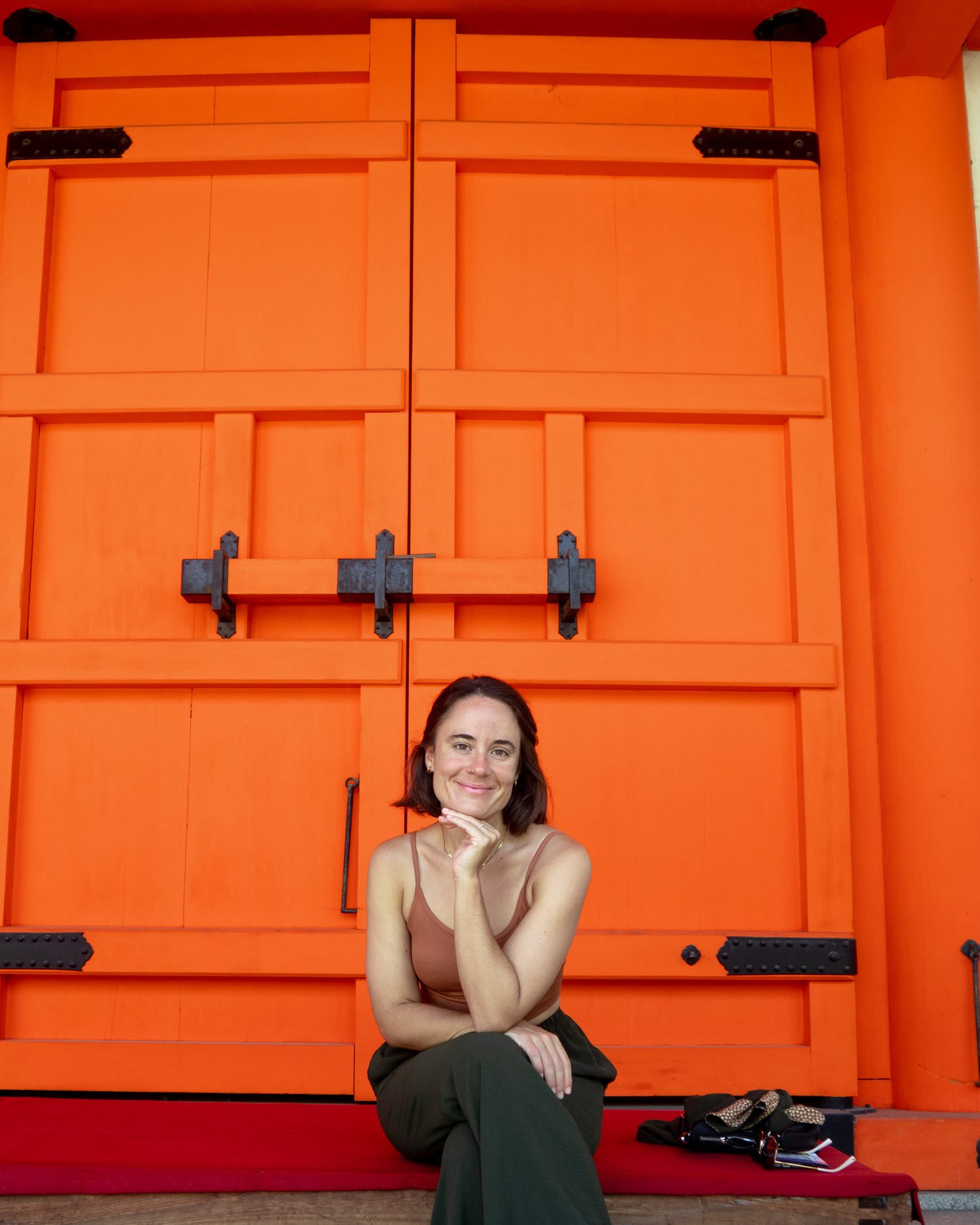
Travel Advisor
Molly Brown

Get in touch with Molly
Did you like this guide? Reach out to customize and book your own experience. Or, just to chat about travel in general.
You can expect a response from Molly within 1–2 business days. You’ll also be subscribed to our traveler newsletter (you can unsubscribe at any time).
Ready for an adventure in Central America? Check out my guide to Costa Rica: 4-Day Adventure Itinerary in Montezuma, Costa Rica.